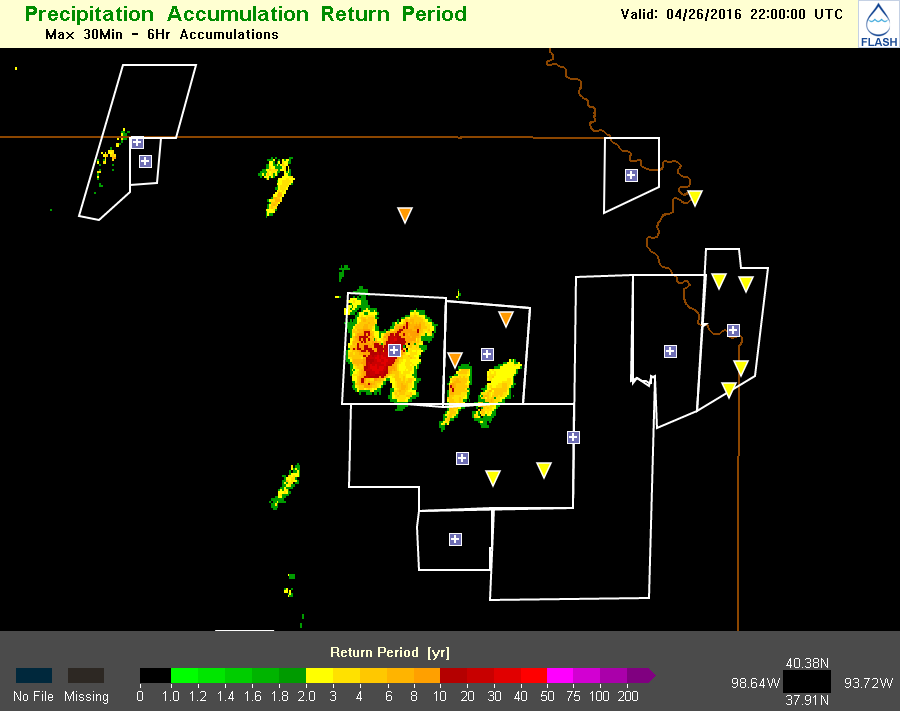Precipitation Return Periods - Warning Decision Training Division (WDTD)
Navigation Links
Products Guide
Precipitation Return Periods
Short Description
Comparison of the MRMS Radar-Only QPE value at each grid point with the NOAA Atlas 14 precipitation frequency estimate for the same grid point to determine how rare a precipitation estimate is for that grid point for the given duration
Subproducts
Available for rainfall durations of 30-min, 1-, 3-, 6-, 12-, and 24-hours. A maximum product exists which finds the maximum return period across all accumulation durations.
Primary Users
NWS: WFO, RFC
Input Sources
MRMS Radar-Only QPE, NOAA Atlas 14 Precipitation Frequency Estimates
Resolution
Spatial: ~1 km x 1 km
Temporal: 2 minutes
Product Creation
The FLASH system takes the MRMS Radar-Only QPE value for the defined accumulation periods (1-, 3-, 6-, 12-, and 24-hours) and compares those gridded values to the corresponding NOAA Atlas 14 precipitation frequency estimate to determine how frequently that rainfall amount for that duration has occurred in the past. It is reported in years, but it is better to take 1 divided by the yearly value to think of it as the percentage chance a rainfall amount of that value will occur in a given year (e.g. a 25-year return period means the current rainfall amount for that duration and location had a 4% chance of occurring…in other words it is a fairly rare event you are observing)
Technical Details
Latest Update: MRMS Version 12
NOTE: In version 12, all FLASH products now use the instantaneous rainfall rates from the Dual-pol radar synthetic QPE product.
Accessible on:
- Operational AWIPS
- V11.5 -- MRMS menu
- V12 -- via LDM, if set-up
- MRMS Development site
References
Gourley, J., Z. Flamig, H. Vergara, P. Kirstetter, R. Clark III, E. Argyle, A. Arthur, S. Martinaitis, G. Terti, J. Erlingis, Y. Hong, and K. Howard, 2016: The Flooded Locations And Simulated Hydrographs (FLASH) project: improving the tools for flash flood monitoring and prediction across the United States. Bull. Amer. Meteor. Soc. doi:10.1175/BAMS-D-15-00247.1, in press.




